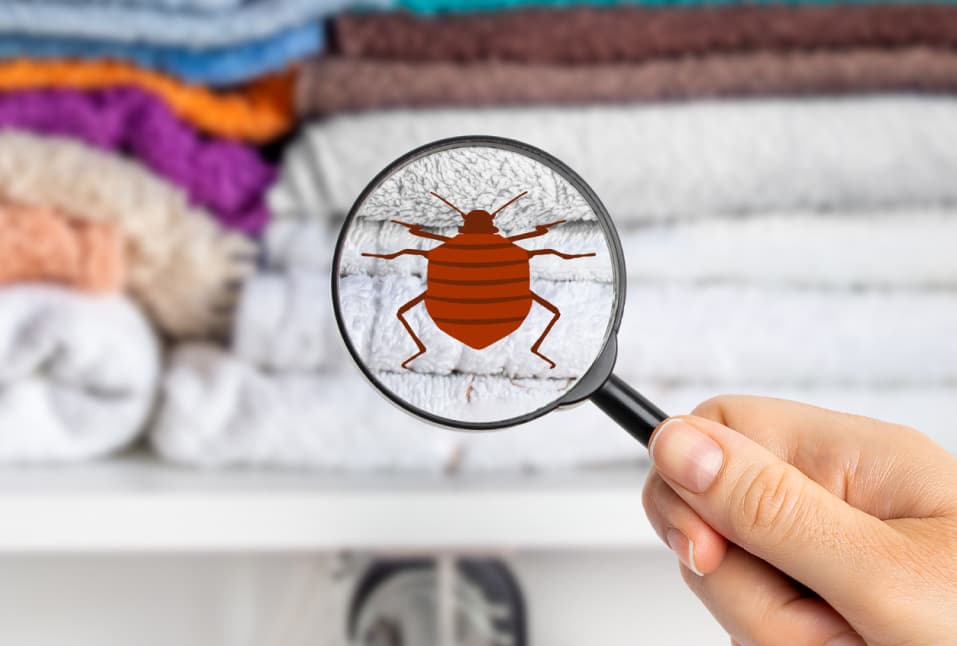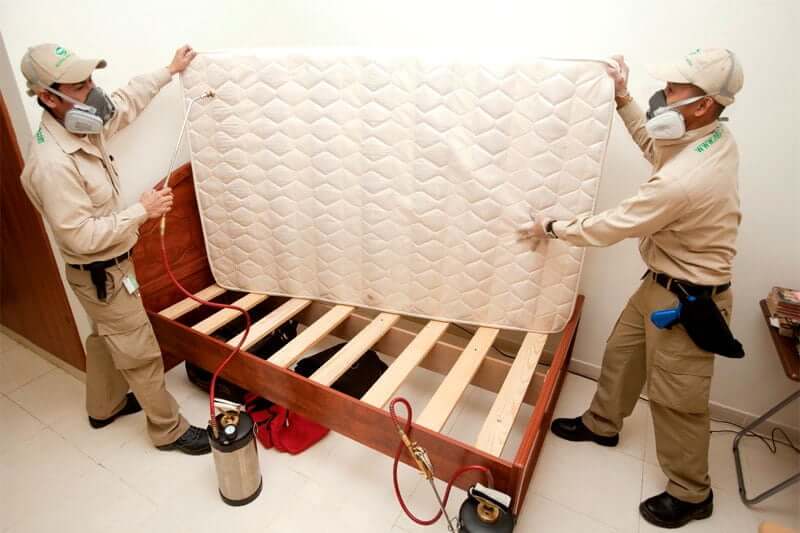Check Out the Different Types of Bug and Their Therapy Options for Effective Management
The management of bugs in both agricultural and household settings requires a thorough understanding of the numerous types that can attack these settings, along with the treatment options readily available for efficient control. From house rodents that posture wellness dangers to garden insects that threaten plant returns, each classification demands a customized strategy. Understanding the subtleties of pest behavior and the equivalent treatments is crucial; nonetheless, the concern stays: what are the most efficient strategies that not just deal with existing infestations but likewise stop future incidents?

Common Family Vermin
Although household parasites can differ substantially in type and behavior, several share common attributes that make them an annoyance. Typical family bugs include rats such as rats and mice, bugs like cockroaches and ants, and occasional invaders such as spiders and flies. These bugs frequently thrive in settings that provide simple accessibility to food, water, and shelter, making homes particularly vulnerable.
Rodents, for example, are notorious for creating architectural damage and spreading disease. They can munch via electrical cords, potentially causing fire hazards. Pests like cockroaches are not only disturbing however can also trigger allergies and bronchial asthma in sensitive people. Ants, while normally safe, can attack kitchen areas, providing food resources unattractive.
Reliable parasite administration begins with prevention, which includes sealing entrance factors, keeping tidiness, and using ideal storage approaches for food. Comprehending the behaviors and characteristics of these usual house insects is vital for effective management and keeping a healthy and balanced living atmosphere.
Yard Bugs and Their Effect
Garden insects present a significant hazard to the health and wellness and efficiency of plants, with some quotes suggesting that they can cause as much as 40% of crop losses in specific areas. These bugs, which include bugs such as aphids, caterpillars, and beetles, as well as nematodes, can inflict severe damages by eating plant tissues, causing stunted development, reduced yields, and jeopardized quality.
The effect of garden parasites extends beyond plain aesthetic concerns; they can interrupt ecosystems by altering food cycle, influencing pollinators, and spreading illness among plants. Insects like the spider mite can weaken plants, making them extra at risk to fungal infections. Furthermore, invasive types may outcompete indigenous flora, leading to biodiversity loss.
Integrated Insect Administration (IPM) techniques, which combine biological control, social techniques, and targeted chemical applications, can supply lasting options. By recognizing the details insects and their habits, gardeners can apply targeted treatments that not only safeguard their plants yet additionally promote a much healthier yard ecosystem.
Rats: Recognition and Risks
Rats are common yard pests that can pose significant threats to plant health and wellness and total ecosystem security. These tiny creatures, including varieties such as voles, rats, and mice, flying ants are frequently determined by their sharp incisor teeth and robust bodies. Their hair coloration varies extensively, ranging from grey to brownish, and they generally display a long tail which aids in balance and agility.
The threats associated with rodent infestations are complex. First of all, they can create substantial damages to plants and gardens by gnawing on stems, roots, and fruits, which can lead to significant economic loss for gardeners and farmers. Second of all, rats are infamous for their function as vectors of different diseases, including hantavirus and leptospirosis, which can be transmitted to More hints people and pets. Their droppings and pee can contaminate soil and water resources, intensifying wellness risks.
Additionally, rats can disrupt the natural equilibrium of local ecosystems by taking on native wild animals for resources. Their burrowing habits can lead to dirt erosion and destabilization of plant origins. Early recognition and understanding of rodent behaviors and threats are essential for effective bug administration.
Effective Treatment Approaches
When managing rodent invasions, using reliable treatment approaches is crucial for reducing damage and health and wellness risks. Snap catches and electronic traps offer a quick and humane means to eliminate rodents, while adhesive traps can help keep an eye on activity degrees.
Secondly, bait stations including rodenticides can be purposefully put in areas of high rodent task. These terminals ought to be tamper-resistant to ensure the security of non-target pets and children. It is crucial to pick the suitable lure type, as rats can create bait aversion if not changed occasionally.
In enhancement to catches and bait, sealing entrance points can considerably reduce the possibilities of re-infestation. This involves checking and fixing voids in home windows, doors, and walls.
Lastly, professional bug why not try these out control services can be valuable for considerable invasions. They possess the proficiency, devices, and products essential for reliable obliteration and can establish a tailored administration plan. By executing these treatment methods, homeowner can efficiently deal with rodent issues and shield their wellness and home.
Preventative Steps and Tips

Maintaining tidiness is just as essential; guarantee that food is saved in airtight containers and without delay tidy up spills or crumbs. Routinely dealing with waste and guaranteeing that compost heaps are managed effectively can deter parasites from being brought in to your home.
Furthermore, think about landscape design practices that dissuade rodent habitation. Trim back plant life and maintain mulch far from the structure of your residential or commercial property, as these can provide hiding places for insects.
Conclusion
Efficient bug management demands a detailed understanding of numerous pest kinds and their details therapy choices. Customized methods for house insects, garden bugs, and occasional invaders are necessary for decreasing risks and enhancing control actions. By integrating efficient treatment methods with preventative strategies, such as routine evaluations and keeping tidiness, the possibility of invasions can be substantially reduced. Inevitably, a positive position on pest administration promotes a much healthier environment, protecting both farming and property spaces from pest-related obstacles.
Common house insects consist of rats such as computer mice and rats, pests like cockroaches and ants, and periodic invaders such as spiders and flies.Rodents are usual yard pests that can position substantial threats to plant wellness and total ecosystem security. Early recognition and understanding of rodent behaviors and risks are critical for reliable parasite monitoring.
Efficient bug administration starts long prior to a problem occurs, with aggressive actions that can substantially minimize the possibility of rodent access and habitation.Reliable insect management necessitates a comprehensive understanding of numerous parasite types and their specific treatment alternatives.